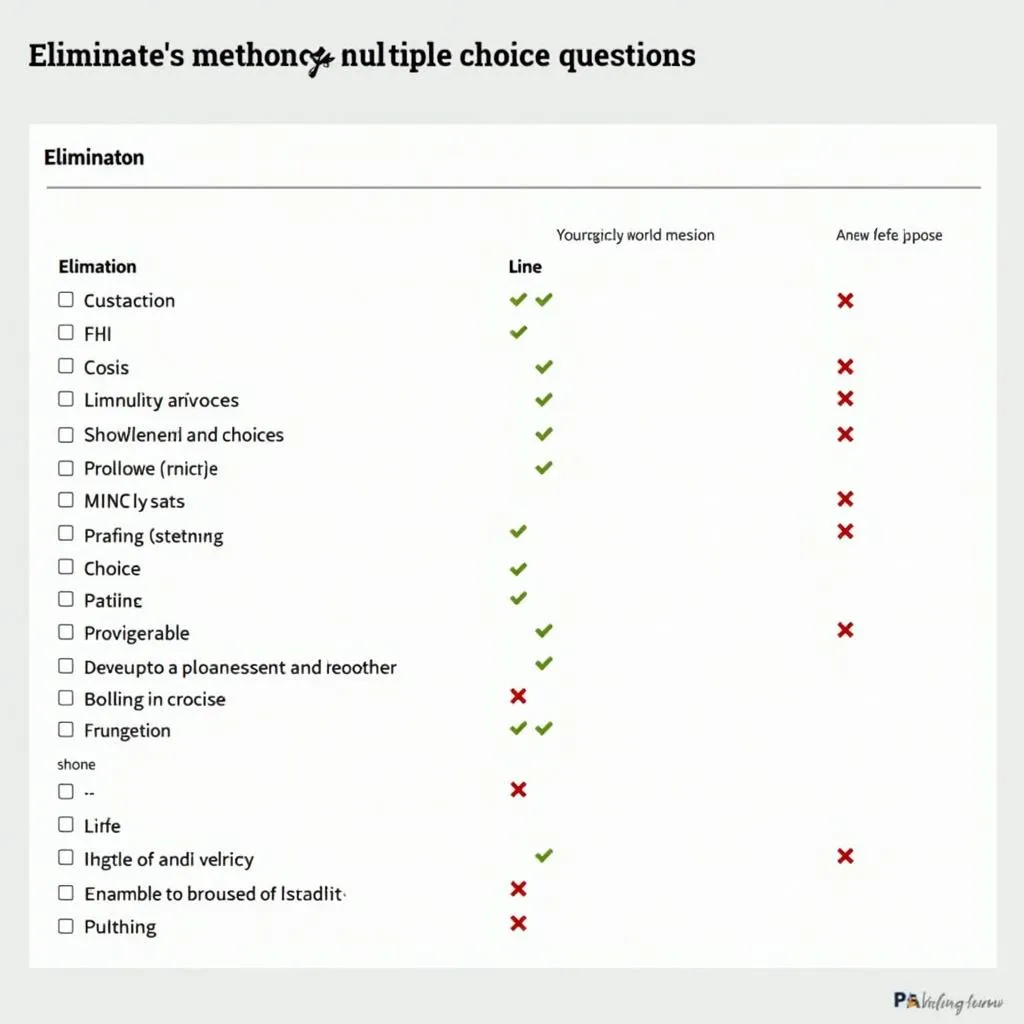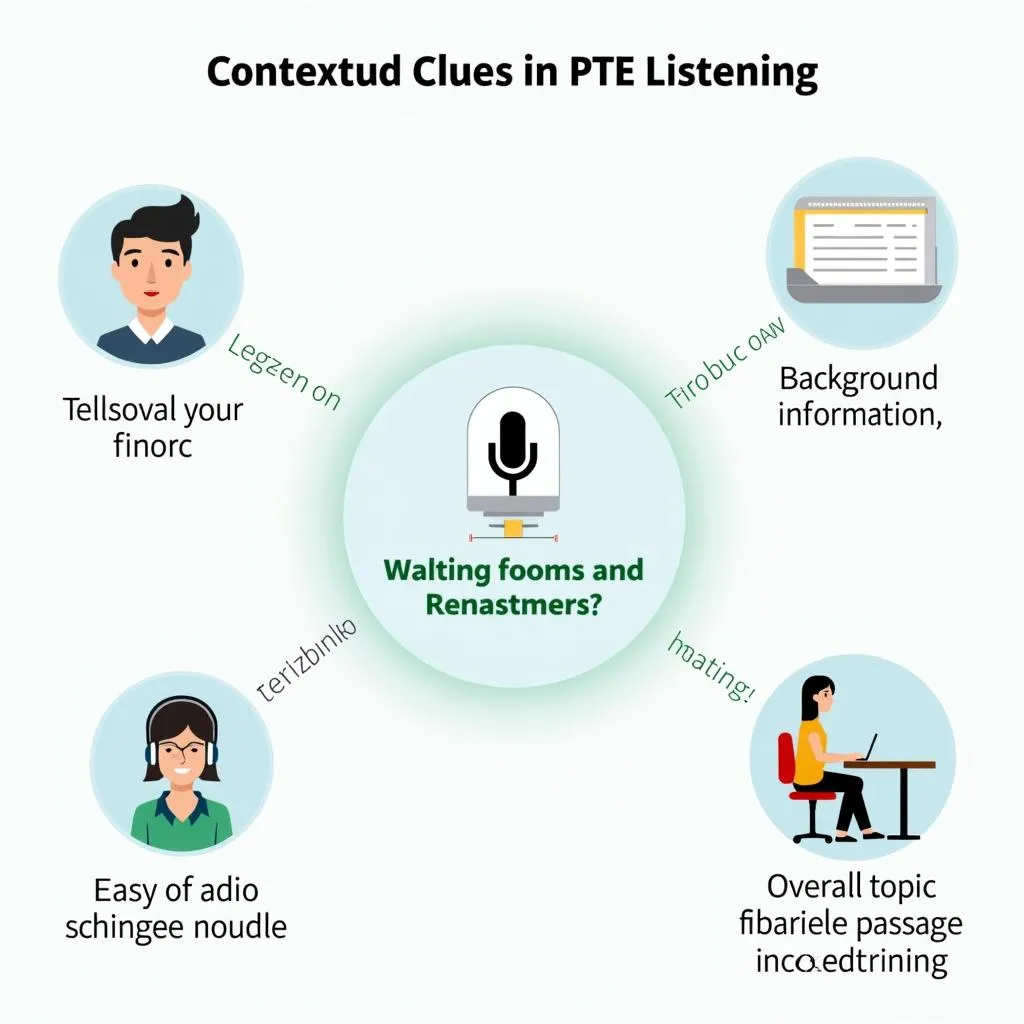The PTE listening section can be challenging, especially when it comes to multiple choice questions. However, with the right strategies, you can significantly improve your performance and boost your score. In this comprehensive guide, we’ll explore effective techniques for tackling multiple choice questions in the PTE listening section, helping you approach the test with confidence and precision.
Understanding the PTE Listening Multiple Choice Format
Before diving into strategies, it’s crucial to understand the format of multiple choice questions in the PTE listening section. These questions typically fall into two categories:
- Single answer: Choose one correct answer from several options.
- Multiple answers: Select two or more correct answers from a list of options.
Both types require careful listening and critical thinking skills to identify the correct response(s) based on the audio input.
PTE listening module practice techniques are essential for familiarizing yourself with these question types and improving your overall performance.
Key Strategies for PTE Listening Multiple Choice Success
1. Active Listening Techniques
Developing strong active listening skills is fundamental to excelling in the PTE listening section. Here are some techniques to enhance your active listening:
- Focus intently on the speaker’s words and tone
- Visualize the information being presented
- Take mental notes of key points and details
- Anticipate potential questions based on the content
By practicing these techniques regularly, you’ll become more adept at capturing and retaining important information from the audio passages.
2. Skimming and Predicting
Before the audio begins, quickly skim through the question and answer options. This strategy allows you to:
- Identify key words and themes
- Predict potential topics and information
- Focus your listening on relevant details
Dr. Emma Thompson, a renowned PTE expert, emphasizes the importance of this approach: “Skimming the questions beforehand primes your brain to listen for specific information, significantly improving your chances of selecting the correct answer.”
3. Elimination Method
When faced with multiple choice questions, the elimination method can be highly effective:
- Identify obviously incorrect options
- Cross out these wrong answers
- Focus on the remaining choices
- Select the most appropriate answer(s) based on the audio input
This strategy narrows down your options, increasing the likelihood of choosing the correct answer, especially when you’re unsure.
 Elimination Method in PTE Listening
Elimination Method in PTE Listening
4. Keyword Recognition
Train yourself to identify keywords and phrases that are likely to be included in correct answers. Pay attention to:
- Names, dates, and numbers
- Superlatives (e.g., most, least, best)
- Contrast words (e.g., however, although, but)
- Emphasis words (e.g., importantly, significantly)
Recognizing these keywords can help you quickly locate the relevant information in the audio and match it to the correct answer choice.
5. Note-Taking Techniques
While note-taking is not allowed during the actual PTE test, practicing this skill during your preparation can significantly enhance your listening comprehension and memory retention. Develop a system of shorthand and symbols to quickly jot down key information during practice sessions.
How to handle long audio clips in PTE listening provides valuable insights on managing extended audio passages, which can be particularly challenging in multiple choice questions.
6. Managing Time and Stress
Time management and stress control are crucial factors in your PTE listening performance. Here are some tips to help you stay calm and focused:
- Practice with timed mock tests to improve your pacing
- Take deep breaths to reduce anxiety before and during the test
- Stay focused on the current question without dwelling on previous ones
- Trust your instincts when selecting answers
Dr. Sarah Lee, a PTE preparation specialist, advises: “Remaining calm and centered during the listening section allows you to process information more effectively, leading to better decision-making in multiple choice questions.”
PTE listening module stress management offers additional strategies for maintaining composure during the test.
7. Contextual Understanding
Developing a strong sense of context can greatly aid in answering multiple choice questions correctly. Pay attention to:
- The overall topic of the audio passage
- The speaker’s tone and attitude
- Any background information provided
Understanding the broader context helps you make more informed choices when selecting answers, especially when dealing with nuanced or implicit information.
 Contextual Clues in PTE Listening
Contextual Clues in PTE Listening
8. Practice with Varied Accents and Speech Patterns
The PTE listening section features speakers with diverse accents and speech patterns. To prepare effectively:
- Listen to podcasts, news broadcasts, and lectures from various English-speaking countries
- Practice with PTE mock tests that include a range of accents
- Focus on understanding the content rather than getting distracted by unfamiliar pronunciations
Exposing yourself to different accents will increase your adaptability and confidence in the actual test.
Conclusion
Mastering the PTE Listening Section Multiple Choice Strategies requires dedication, practice, and a strategic approach. By implementing these techniques and consistently refining your skills, you’ll be well-equipped to tackle the challenges of the PTE listening section with confidence and precision. Remember to utilize PTE academic test section-wise breakdown for a comprehensive understanding of the test structure, and consider how to practice under exam pressure for PTE to simulate test conditions effectively.
With perseverance and the right strategies, you’ll be on your way to achieving your desired score in the PTE listening section. Good luck!
FAQ
What is the format of multiple choice questions in the PTE listening section?
The PTE listening section includes two types of multiple choice questions: single answer (choose one correct option) and multiple answers (select two or more correct options).
How can I improve my active listening skills for PTE?
Enhance active listening by focusing intently on the speaker, visualizing information, taking mental notes, and anticipating potential questions based on the content.
Is note-taking allowed during the PTE listening section?
Note-taking is not permitted during the actual PTE test. However, practicing note-taking during preparation can improve your listening comprehension and memory retention.
How important is time management in the PTE listening section?
Time management is crucial. Practice with timed mock tests to improve your pacing and develop strategies for efficiently answering questions within the allotted time.
Can you provide tips for managing stress during the PTE listening test?
To manage stress, practice deep breathing, stay focused on the current question, and trust your instincts. Regular practice with mock tests can also help build confidence and reduce anxiety.
How can I prepare for different accents in the PTE listening section?
Prepare for varied accents by listening to diverse English-speaking sources like podcasts, news broadcasts, and lectures from different countries. Practice with PTE mock tests that include a range of accents.
What should I do if I’m unsure about an answer in the multiple choice section?
If unsure, use the elimination method to cross out obviously incorrect options, then choose the most plausible answer based on the information you’ve heard. Trust your instincts and avoid second-guessing yourself.